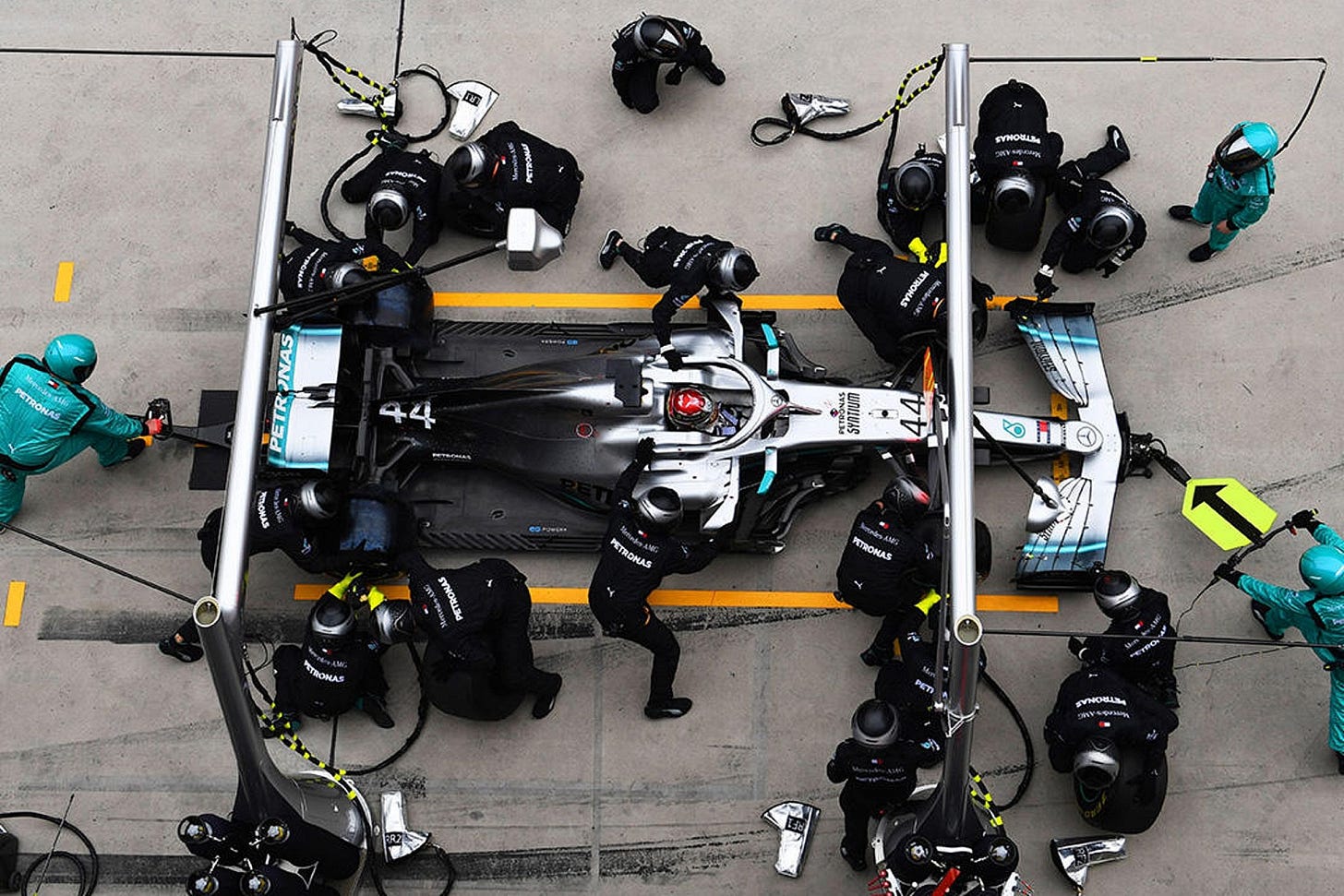What can Product Managers learn from watching F1 car races?
Watching F1 racing as a kid may have seemed like just a thrilling spectator sport, but now as a product manager, I can see the similarities between the role of an F1 team principal and my own work as a team leader. Here are some observations for product managers looking to improve their leadership skills.
As a kid, I was a die-hard Formula 1 fan. On race weekends, my sister, dad and I would huddle around the TV to watch the high-speed drama unfold. We'd cheer as Michael Schumacher, Kimi Raikkonen, and Fernando Alonso battled it out on the race track, cringe as cars sputtered and slowed down, and hold our breaths as crashes threatened to throw the leaderboard off track. And of course, we loved the celebratory champagne showers on the podium. But it wasn't until I recently watched the latest season of the F1 documentary series, Drive to Survive on Netflix that I realized how much more goes on behind the scenes. And as a product manager, I found myself thinking about the parallels between the role of an F1 team principal and my own work as a team leader.
#1: Team Leadership
The F1 Principal is responsible for the smooth execution of a race car team. They have a pulse on team morale, strategize before and after a race, are constantly evaluating opportunities to improve, make quick strategic or tactical, acknowledge errors, communicate to producers/media/owners, and celebrate wins.
Product managers are responsible for creating and executing product plan, rallying the team towards a common goal, making last minute scope decisions to ensure timely delivery, triaging bugs to fix, and communicating wins and leanings to leadership.
For example:
In season 5, Toto Wolff is closely watching the race, collecting data, and working with engineers to tweak the performance of the Mercedes-AMG after each race. His goal as a leader is to identify and fix the most pressing problem and ensure team victory.
Similarly, as a PM, we are constantly evaluating inbound research, funnel drop off rates, competitive assessments, to draw insights and identify areas of opportunities to achieve product goals.
#2: Communciation
I love the communication styles in F1 racing. It's succinct and clear. There's generally no extra information thats being shared with drivers since every second can cost them the race.
In product reviews, I aim to respond to every question with a simple 'yes', 'no', or ' I don't know but I will follow up', to ensure clear and concise communication.
For example:
In F1, I love it when drivers respond saying "Understood" - a single word that communicates they got it and the team can trust they will act on it.
As a PM, your response with 'yes' is indicative of leadership alignment with the concept being presented, 'no' is a misalignment or an opportunity to further clarify the concept. This helps build trust and ensure everyone is on the same page.
#3: Being the calming factor
F1 racing is a high stake, high stress environment. Emotions are running high, personal incentives may differ from team incentives. There's lots of visibility and opinions on your decisions as a team principal. The principal is responsible to stay calm and composed and lead the team through any calamities.
When shipping a high visibility project with tight timelines, a PM is responsible to manage high emotions from founders or stressed out team members. Decisions maybe questioned by the end-users or media. A good leader maintains composure and helps the team stay focussed on goals without losing morale.
For example: A great F1 Principal or product leader is able to maintain a calm sense of presence, be objective about feedback and channel the negativity into an optimistic forward looking outlook.
By drawing parallels between seemingly unrelated areas, we can gain valuable insights to apply to our work and become better leaders in our respective fields. Watching high-speed F1 racing drama sure beats a leadership book I've read in a while :)


